Key takeaways:
- Public information databases raise concerns about privacy and the need for individuals to understand and control their own data.
- Protecting personal data is essential in preventing identity theft and cyber threats, necessitating strong passwords and two-factor authentication.
- Common risks of data exposure include ransomware attacks, social engineering, and data leaks, highlighting the importance of vigilance in online behaviors.
- Utilizing privacy tools such as VPNs, privacy-focused browsers, and encryption software can significantly enhance data protection online.
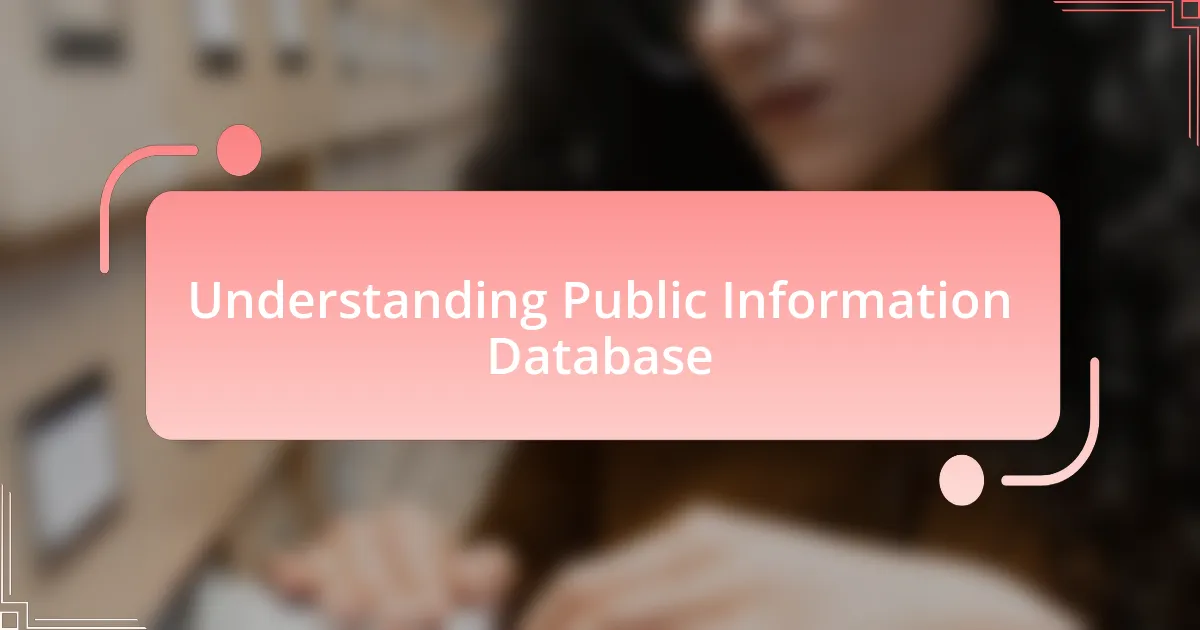
Understanding Public Information Database
A public information database acts as a reservoir of data that is accessible to anyone, often including records from government agencies, court systems, and various public entities. When I first encountered these databases, I was surprised by how much personal information could be found with just a few clicks. It raised an interesting question for me: how much do we really know about what’s out there regarding our own data?
In my experience, navigating a public information database can feel both fascinating and unsettling. I remember searching for my name out of curiosity and finding detailed records I didn’t even realize were publicly available. It made me ponder the balance between transparency and privacy—should we have more control over our own information in an age where everything seems so accessible?
Understanding how these databases function is crucial, especially because they can vary widely in what they include and how they are maintained. It’s often a mix of painstakingly collected records and automated inputs. Isn’t it intriguing to think about how that combination can affect the accuracy of the information? This curiosity drives me to dig deeper into how public databases are structured and the implications they have on privacy and security.
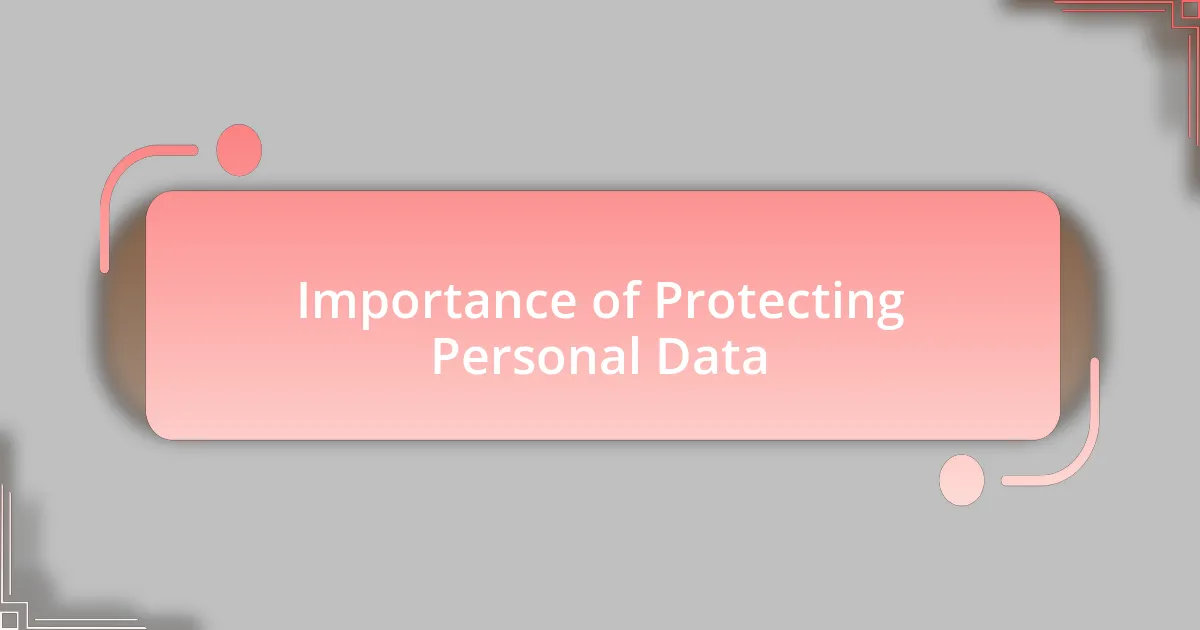
Importance of Protecting Personal Data
The significance of protecting personal data in our digital landscape cannot be overstated. I recall a time when a friend of mine faced identity theft after his personal information was compromised online. It was a jarring experience, making me realize just how vulnerable we all are if we don’t take precautions. The emotional toll it took on him was palpable; it’s a reminder that our data isn’t just information—it’s a part of our identity.
Privacy isn’t merely a luxury anymore; it’s a necessity. When I think back to my own online habits, I often wonder how many times I’ve accepted terms and conditions without fully understanding their implications. It strikes me that each click can open doors to potential risks. This realization has shifted how I approach my online presence, compelling me to be more selective about the information I share.
In an age where cyber threats loom large, protecting personal data feels like building a fortress around our most valuable assets. I’ve started implementing stronger passwords and enabling two-factor authentication in my accounts, partly out of concern and partly out of a need to reclaim my sense of security. How many of us truly consider the consequences of inaction until it’s too late? The urgency to safeguard our personal information is not just a matter of precaution—it’s essential for maintaining control over our lives in a connected world.
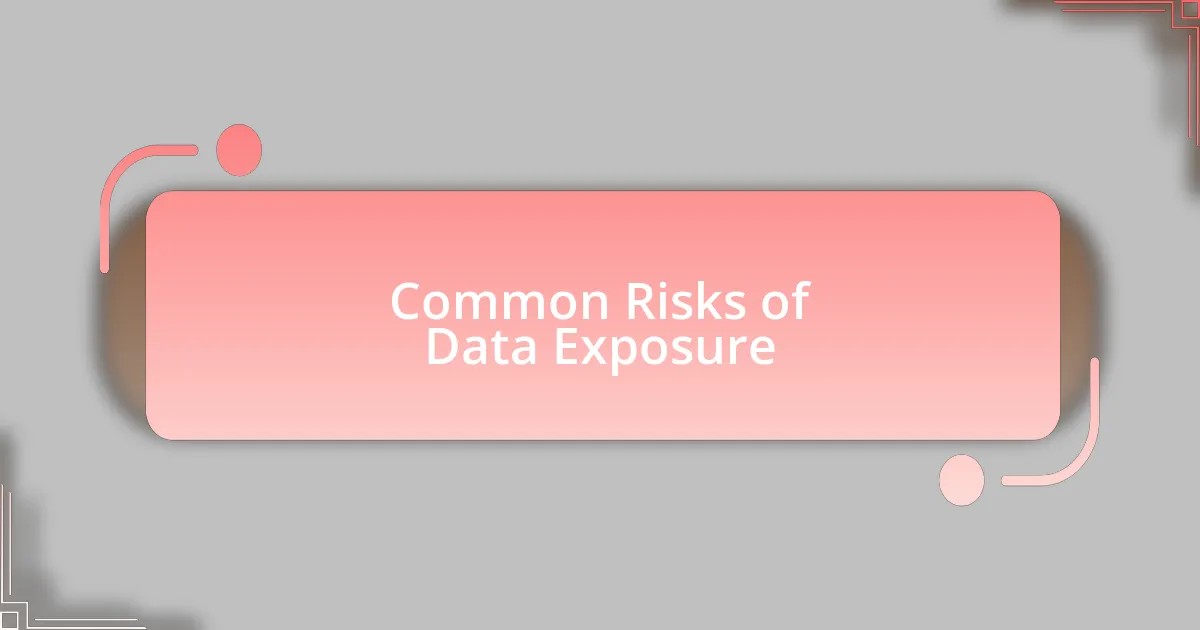
Common Risks of Data Exposure
When I think about the common risks of data exposure, one alarming thought comes to mind: ransomware attacks. A colleague of mine experienced this firsthand when their business was held hostage by malicious software. The panic and uncertainty that enveloped them during that time highlighted how quickly our data can be manipulated by those with ill intentions. What steps would you take if your files vanished overnight?
Another risk is social engineering, which preys on human psychology rather than vulnerabilities in technology. I once received a call from someone claiming to be from my bank, asking for verification details. My gut instinct told me something was off, and I ended the call instead of following their request. It goes to show that safeguarding our data isn’t only about firewalls and encryption; it’s also about being aware of the tactics used to trick us.
Data leaks are another significant risk, often stemming from insecure websites or poorly managed databases. I remember reading about a major company that suffered a breach and exposed millions of users’ personal information. It made me wonder: if such a large organization couldn’t protect itself, how can I ensure my own data remains safe? These incidents remind us that even with vigilance, risks are always lurking in the shadows, necessitating a constant reassessment of our online habits.
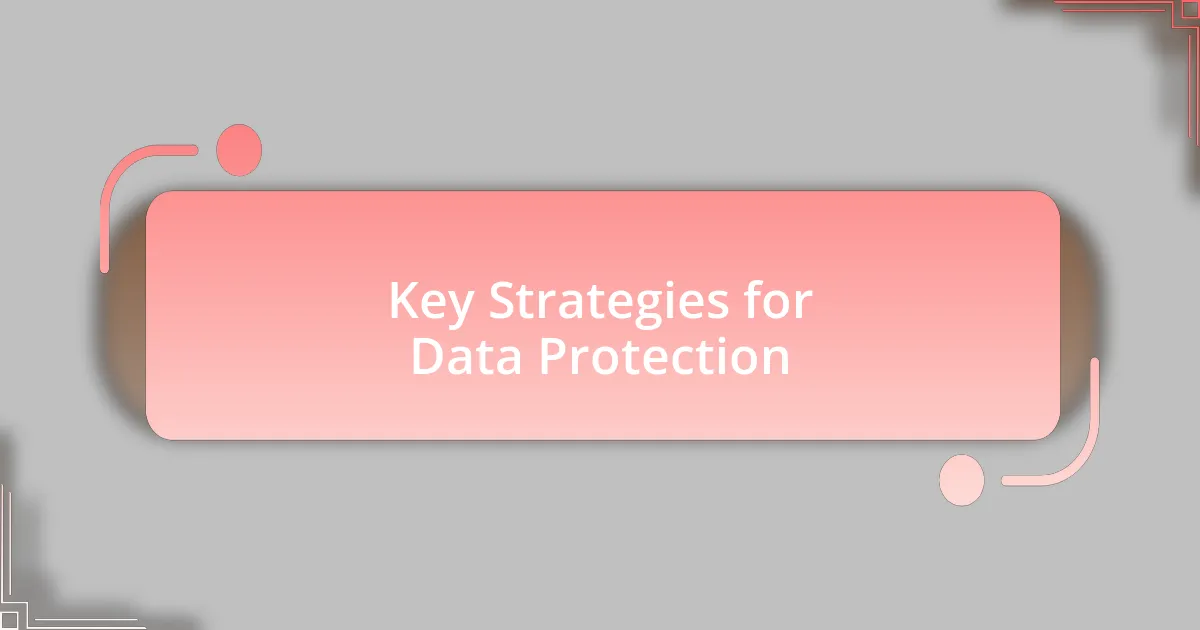
Key Strategies for Data Protection
When it comes to protecting my data online, one fundamental strategy is using strong, unique passwords for every account. I remember a time when I used the same password for multiple sites, and when one got hacked, it felt like I had left my front door wide open. Now, I rely on a password manager, which not only helps me create complex passwords but also keeps them safe and accessible. Have you ever thought about how a simple tweak in your password habits can make a huge difference?
Another critical approach is enabling two-factor authentication (2FA). I’ve found that adding this extra layer of security gives me peace of mind, especially when accessing sensitive information. The few extra seconds it takes to verify my identity feels trivial compared to the reassurance it provides. It begs the question: can you afford to skip such a simple step for safeguarding your data?
Lastly, I believe regularly updating software and applications is essential. I used to ignore update notifications, thinking they were just minor improvements, but I learned the hard way when an outdated app became a target for cyber attackers. Staying current not only enhances performance but also patches security flaws. With the ever-evolving landscape of online threats, why leave your data vulnerable when an update could shield you from potential breaches?
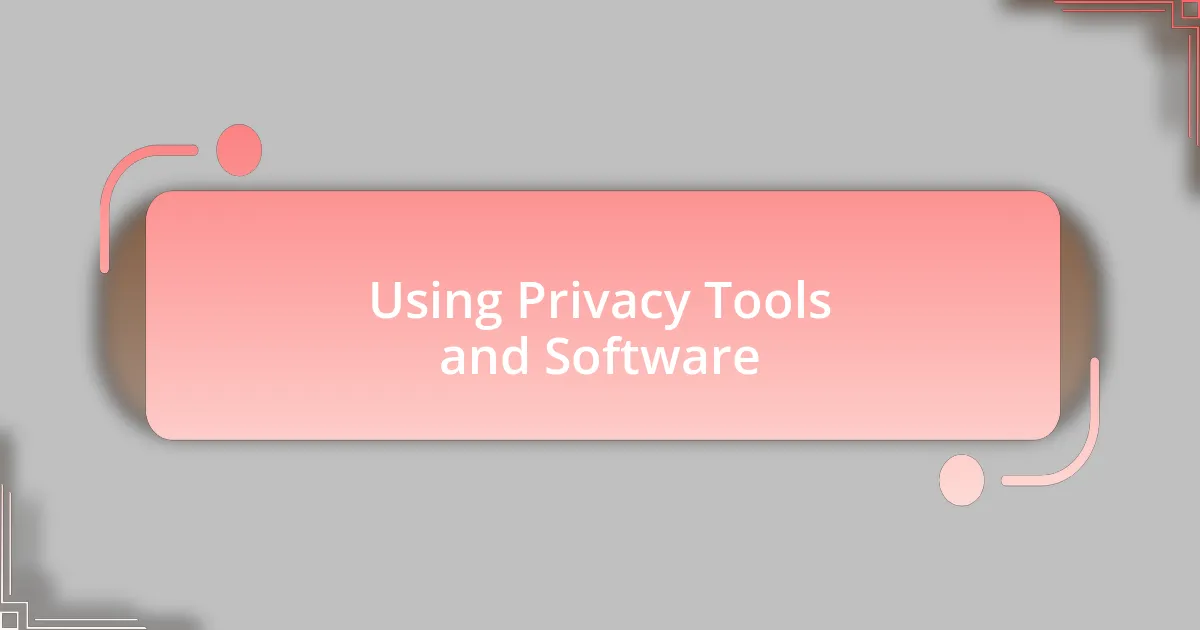
Using Privacy Tools and Software
When it comes to using privacy tools and software, I’ve found virtual private networks (VPNs) to be invaluable. I remember a time while traveling, I tried to connect to public Wi-Fi at a café, and the thought of hackers lurking made me uneasy. Once I started using a VPN, I felt an immediate sense of security; it concealed my online activities and encrypted my data, making it far more challenging for anyone to snoop on my connection. Isn’t it fascinating how technology can create a protective barrier against prying eyes?
I also swear by privacy-focused browsers and extensions. I used to ignore ads claiming they could block trackers, but after seeing the barrage of ads tailored to my browsing history, I knew I had to take action. Switching to a browser that prioritizes my privacy made a significant difference; not only am I shielded from invasive tracking, but my browsing experience feels cleaner and safer. Have you ever noticed just how much smoother your online experience can be when you take control of your privacy?
Lastly, encryption software has become a staple in my data protection routine. I recall an incident where I lost files containing sensitive information because they weren’t properly secured. That was a real wake-up call. Using encryption now ensures that even if my files are accessed, they remain unreadable without the correct key. It’s a simple tool, yet so empowering. Don’t you think safeguarding your personal data should be a non-negotiable part of your online life?
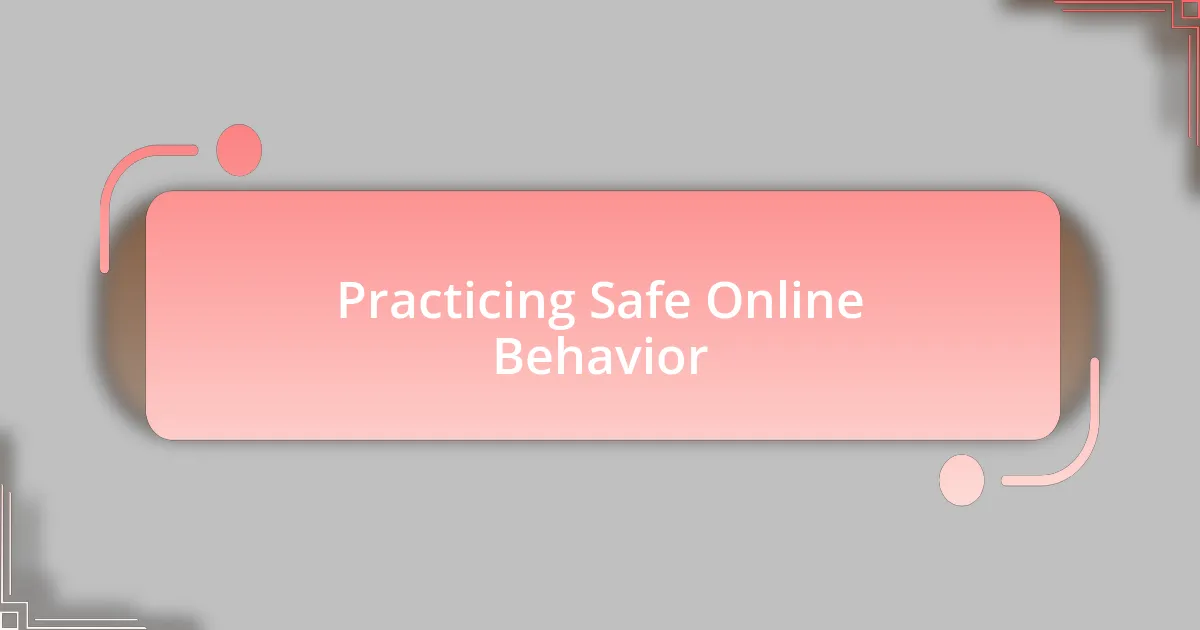
Practicing Safe Online Behavior
Practicing safe online behavior starts with being mindful of the information I share on social media. I once posted a fun photo from a recent trip, only to realize later that revealing my location could invite unwanted attention. It’s a simple oversight, but it taught me the importance of being cautious with geotagging and personal details. How often do we really think about what our posts might reveal?
I also prioritize using unique passwords for each online account. I can’t stress enough how pivotal this has been in preventing breaches. After learning about a data leak from a service I had used, I quickly changed all my passwords. It was a hassle at the time, but now I feel a renewed sense of control over my accounts. Have you considered that a strong, unique password might be your first line of defense against cyber threats?
Another crucial aspect of my online behavior is being vigilant about the links I click. I remember receiving an email that appeared legitimate but had a suspicious link. Instead of directly clicking it, I hovered over the link to inspect the URL before proceeding. This extra step saved me from potentially compromising my data. Isn’t it interesting how a little caution can go a long way in maintaining our online safety?
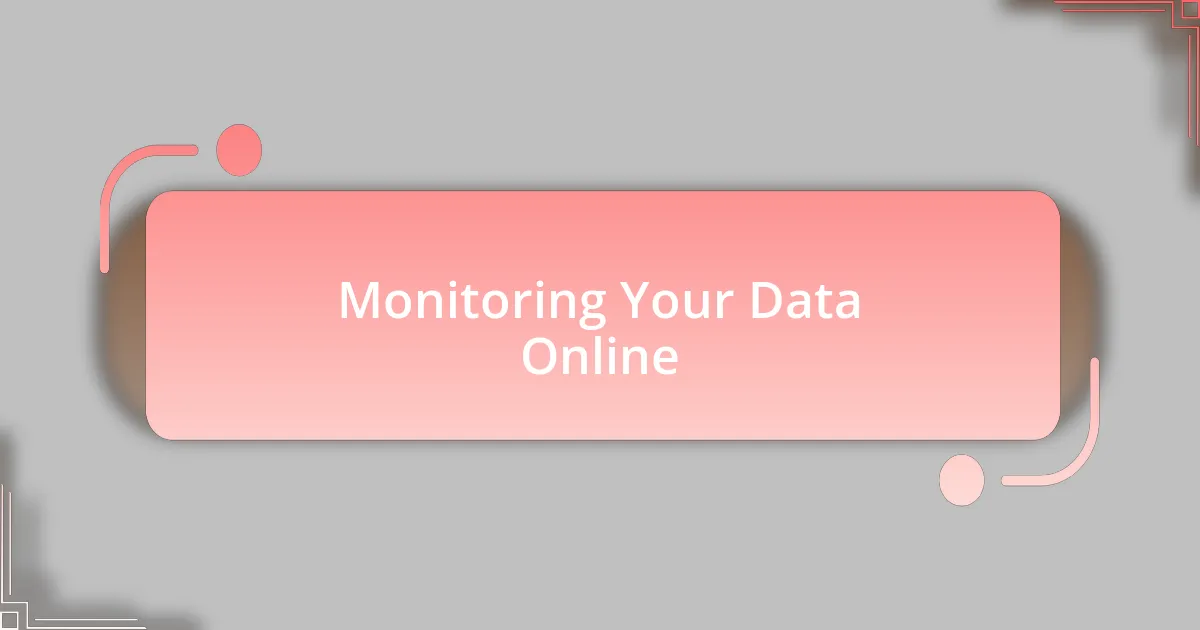
Monitoring Your Data Online
Monitoring my data online is an ongoing process that I take seriously. Just the other day, I decided to Google my name out of curiosity and was surprised at how much personal information popped up. It was a bit unsettling to see my old addresses and other details publicly accessible. Have you ever searched for yourself online? It can be an eye-opening experience that highlights the importance of regularly checking what information is available about us.
I also rely on tools that send alerts when my information appears in data breaches or public databases. Last month, I received a notification that my email was part of a leak from a service I hadn’t used in years. I immediately took action by changing my passwords. This experience reinforced the notion that staying informed is crucial for protecting my digital footprint. How proactive are you in monitoring your online presence?
Finally, I’ve started using privacy settings on social media to limit who can see my posts. After a friend mentioned how easily he was able to find someone’s personal information with just a few clicks, I realized how vital these settings are. It’s amazing how a simple tweak in privacy settings can safeguard my data from unwanted eyes. Have you reviewed your privacy settings recently? It’s a small step that can lead to significant peace of mind.